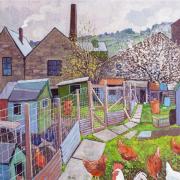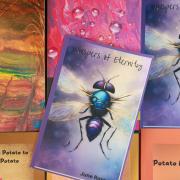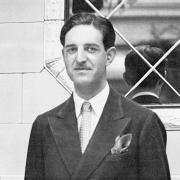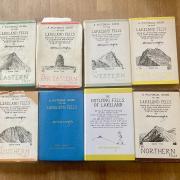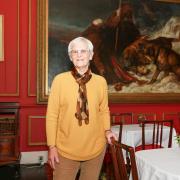One of the first true northern female entrepreneurs was a relatively unsung designer, astute businesswoman and fabric expert called Annie Garnett. Silverwoods consultant Jacquie Fairburn reports

Annie Garnett was born in Bowness on Windermere in 1864 when daughters of well to do families such as hers were kept at home by their fathers. There was never any notion of them earning money.
The exception at the time was learning traditional crafts at local village hall tutorials under the auspices of the church. This resulted in creating products to give employment, sell or support local workers for purely philanthropic ends.
Annie was just 24 when her father died, but the dominant male hierarchy of the time meant that it was remarkable that her stoicism, strength, tenacity and skill achieved so much within the era. Quality of design and care to detail throughout her career was the byword of her reputation. She initially started with local classes, run with the local curate and his wife – but that was soon not enough to satisfy her burgeoning ambition.
In 1891, with the generous gift of six free spinning wheels and six months’ start up finance rumoured to be from John Ruskin and a first order from America, she turned her back on industrialisation and instead returned to the traditional craft of hand spinning.

She gradually built what became ‘Windermere Industries’ which was based next to her family home and dubbed ’The Spinnery’. Her work was always alongside the principles of zero industrialisation or intervention, with values true to the Ruskin and the arts and crafts ethos.
From 1891 to 1914 many beautiful silk, linen and tweed textiles were produced by her company, but it was to be the ’Throwan’ that made her name in the world. It was made from linen warp and silk weft which could be adjusted to taste by varying the weight of weft or warp, taking inspiration from the colours of the landscape around her.
Annie was always a great experimenter and, while she had no formal training, she was forever continuing self-learning to widen her crafts and after a spell at the Yorkshire College, she purchased a Jacquard loom.
She carried out research in museums on the woven fabrics of old and even tried breeding her own silkworms. As her business grew so did her workforce and, at its height, she had over 100 weavers, embroiders and other local craftsmen and women employed in the business. Annie was solely responsible for designs both for the handloom textiles and increasingly fashionable samites as well as associated embroidery with exquisite colours.

The Spinnery was patronised by Queen Alexandra who commissioned the ‘Fritillary’ – hand woven silk fabric. An example in orange, green and white colourways can now be seen in the Victoria and Albert Museum. Liberty, already great arts and crafts supporters, sold her patterns and encouraged her to be more prolific in her supply. Northern ‘incomers’ including the Duchess of Hexham patronised the business to the inevitable chagrin of locals.
This wonderful story of local rural female crafting entrepreneurialism, which surely is a precursor or hint towards the pioneering spirit of the 100-year old Women’s Institute, was all sadly cut short by the advent of the First World War. After that, nothing was ever quite the same for Annie. This brilliant entrepreneurial lady desperately tried to resurrect her industry after the war. Sadly she died in 1942 with very little ceremony, celebration or even an obituary in the local paper. Yet a quote from the respected art magazine ‘The Studio’ in 1902, reported by Jennie Brunton in her book The Arts and Crafts Movement in the Lake District declared: ‘The Spinnery produced some of the most beautiful fabrics ever made in this country’.
The best examples of her work can today be seen at The Museum of Lakeland Life and Industry in Kendal which has a large collection of Annie Garnett textiles and archive material. Only a small amount of this collection is currently on display. w
If you have any antique you would like appraised, Silverwoods’ experts are available for free evaluation and appraisals every Monday (including bank holidays) between 9am and 3pm at their saleroom in Lincoln Way, Clitheroe. Often the best initial step is to email images of your item to: wilf@silverwoods.co.uk..






